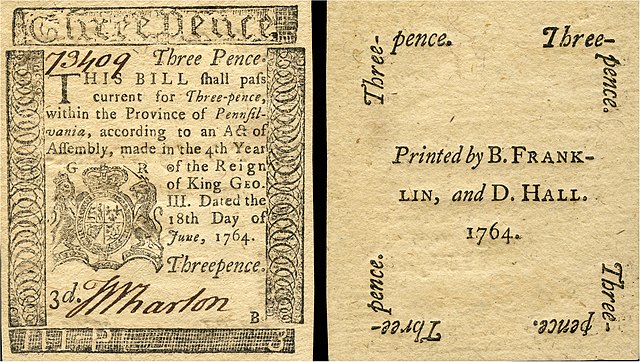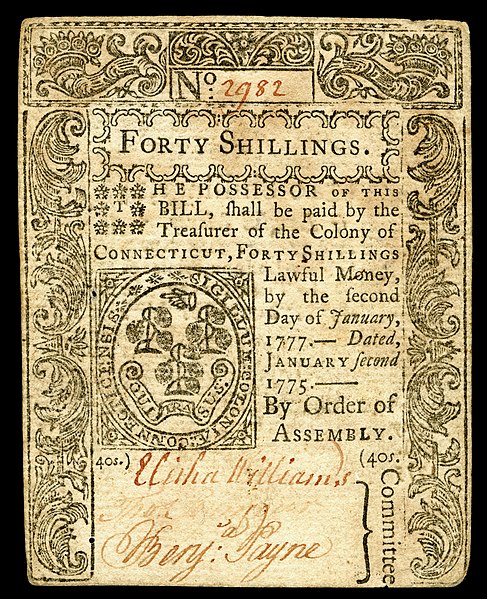Early American currency went through several stages of development during the colonial and post-Revolutionary history of the United States. John Hull was authorized by the Massachusetts legislature to make the earliest coinage of the colony in 1652.
1652 pine tree shilling
Obverse and reverse of a three pence note of paper currency issued by the Province of Pennsylvania and printed by Benjamin Franklin and David Hall in 1764.
Image: US Colonial (CT 178) Connecticut 2 Jan 1775 OBV
Image: US Colonial (CT 178) Connecticut 2 Jan 1775 REV
The United Colonies was the name used by the Second Continental Congress in Philadelphia to describe the proto-state comprising the Thirteen Colonies in 1775 and 1776, before and as independence was declared. Continental currency banknotes displayed the name 'The United Colonies' from May 1775 until February 1777, and the name was being used as a colloquial phrase to refer to the colonies as a whole before the Second Congress met, although the precise place or date of its origin is unknown.
Thirteen Colonies of North America: Dark Red = New England colonies. Bright Red = Middle Atlantic colonies. Red-brown = Southern colonies
1776 eight-dollar Continental Currency banknote featuring "The United Colonies" name.






